If you use a mixing wet and dry dog food calculator, It might confuse you, but it’s the easiest way to give a balanced meal to your dog by using the calculator. Wrong food will create weight issues, energy drops, and health problems. Wet food provides hydration, and dry kibble strengthens teeth and gums. But how do you find the right mix without overfeeding or underfeeding?
If you have any type of dog, such as a picky eater, a growing pup, a senior dog, or a German shepherd, they need special care, exact ratios, and nutrients they need. We’ll explain daily calorie needs, common feeding mistakes, and the correct weight of dog food for any breed or size. You’ll get all the answers about feeding schedules, calorie requirements, and cost-saving tips.
- Also Read: Doxycycline calculator for dogs
Why Add Wet and Dry Dog Food to Your Dog’s Meals?
Your pet enjoys the taste of mixing wet and dry dog food and stays healthy. Here’s why many pet owners choose this option:
- Muscular Bodies and Happy Tummies
- Damp food helps your dog stay firm and hydrated. It also contains water and protein. Dry food is a source of teeth and tummy for your dog. These foods will complete your pet’s diet.
- Tasty Meals Dogs Love
- Mixing wet and dry kibble will change the taste, making it more exciting for your dog.
- Saving Money
- Damp food costs more than dry food. However, you can spend less money if you feed a mixture of these two foods. You will get a lot of benefits without having to pay extra money.
- Using of Calculator
- Using a calculator helps to give the right portions. It is essential to maintain a healthy weight and stop overfeeding or underfeeding.
- Easier Meal Planning
- The mixture of these foods helps to adjust meals for your dog’s size, age, and activity needs without guessing.
Benefits of Wet and Dry Dog Food Calculator
A wet and dry dog food calculator is a tool for convenience—it helps to optimize your pet’s diet in several ways:
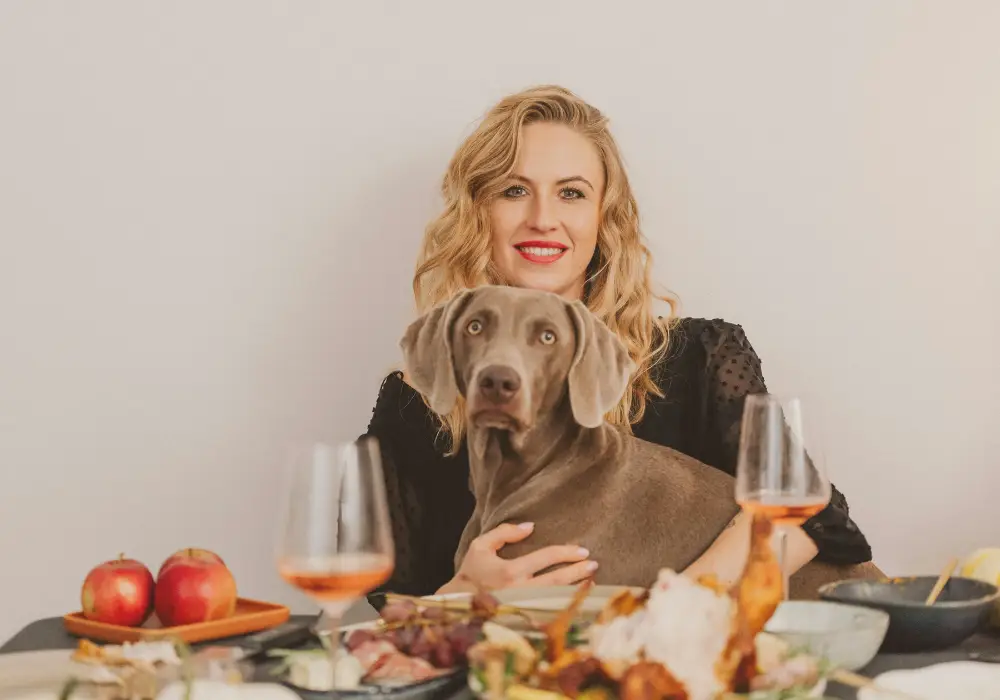
Accurate Calorie Management
You will be asked: How much food does your dog needs, and how do you avoid feeding too much or too little? Too much food causes weight gain, and too little food causes weakness and hunger. Food calculators are used to calculate the dog’s weight, age, and daily activity; they help the dog find the right amount, enabling you to feed the right portions daily.
Customization Ratios
Every dog has its own needs. Some dogs do well with half wet food and half dry food. Others need more of one type, like a mix of 25% wet and 75% dry food. A calculator helps you pick the right balance for your dog. You can adjust the mix to match their size, age, or activity. This way, your dog stays healthy and happy with meals they enjoy.
Prevents Food Waste
It prevents food from being wasted, keeping your dog healthy. It also helps you spend less on extra food; you don’t need to buy more. Using the right amounts makes every meal perfect for your dog. You won’t have to guess or worry about overfeeding.
- Also Read: Red golden retriever puppies
Using a Mixing Wet and Dry Dog Food Calculator by Weight
A mixing wet and dry dog food calculator by weight helps to determine the correct proportions based on daily caloric needs. Here’s how to use one effectively:
- Input Your Dog’s Weight: Enter your dog’s ideal weight in pounds.
- Select the Ratio: Decide the percentage split between wet and dry food (e.g., 50/50 or 25/75).
- Check Caloric Values: Wet food is typically denser in calories than kibble, so adjust accordingly.
Example:
If your dog weighs 40 lbs, it requires 1,108 kcal/day (based on the calorie chart). A 50/50 mix would mean feeding them 554 kcal from wet food and 554 kcal from dry food.
Free Wet and Dry Dog Food Calculators
Online calculators, such as Mixing the Right Ratios: The wet and dry dog food calculator can provide instant results for your dog’s size, activity level, and feeding preferences. These tools are free, easy to use, and incredibly accurate.
Daily calories are essential for your dog’s health. Too much food causes weight gain and health problems; too little food causes weakness and hunger. The table below shows how much food is needed based on your dog’s size and whether it is neutered. It is easy to follow and helps you feed the right amount daily.
Daily Calorie Requirements for Dogs (By Weight and Condition)
| Ideal Weight Calories for Intact Dogs | Calories for Neutered Dogs | Active Dogs (High Energy) |
| 5 lbs 233 k cal | 207 k cal | 280 k cal |
| 10 lbs 392 kcal | 348 kcal | 470 kcal |
| 15 lbs 531 kcal | 472 kcal | 640 kcal |
| 20 lbs 659 kcal | 585 kcal | 800 kcal |
| 25 lbs 779 kcal | 692 kcal | 950 kcal |
| 30 lbs 893 kcal | 794 kcal | 1,100 kcal |
| 40 lbs 1,108 kcal | 985 kcal | 1,400 kcal |
| 50 lbs 1,309 kcal | 1,164 kcal | 1,700 kcal |
| 70 lbs 1,685 kcal | 1,498 kcal | 2,200 kcal |
How to Interpret the Table
- Intact vs. Neutered: Neutered dogs require fewer calories because their metabolism slows down.
- Active Dogs: If your dog is highly active (e.g., hunting, agility, or long daily walks), use the “Active Dogs” column to calculate their needs.
- Customizing the Calorie Needs: Puppies, seniors, and dogs with specific health conditions may fall outside these ranges. Always consult your vet for personalized guidance.
Why Does Calorie Balance Matter?
- Obesity Concerns: Obesity can lead to heart issues, diabetes, and joint problems. Many pet owners don’t realize they are overfeeding until too late.
- Feeding Anxiety: It’s common to feel unsure whether you’re feeding the right portions. A dog food calculator or calorie guide takes away the guesswork.
- Digestive Problems: Overfeeding or underfeeding can result in vomiting, diarrhea, or lethargy.
Essential Tips for Dog Owners
You can create an engaging environment that hitt the correct calorie targets:
- Use a Kitchen Scale: Weigh food portions to avoid errors in feeding. Eyeballing portions create mistakes.
- Mixing Tip: If mixing wet and dry food, adjust the portions so the total calories meet the daily requirement.
- Watch Body Condition: Use body scoring charts to visually assess whether your dog is underweight, overweight, or in ideal condition.
Dog Food Feeding Guidelines
Feeding guidelines vary depending on your dog’s age, activity level, and health status. General rules include:
- Adult Dogs: Feed two meals daily, 8-12 hours apart.
- Puppies: Require 3-4 meals a day to support growth.
- Senior Dogs Often need fewer calories but high-quality protein to maintain muscle.
Monitor your dog’s weight constantly and adjust portions as needed. Please consult your veterinarian; they can also help refine your feeding plan.
Can I Use a Calculator for Puppies or Senior Dogs?
Yes! Calculators can be adjusted for dogs of all life stages:
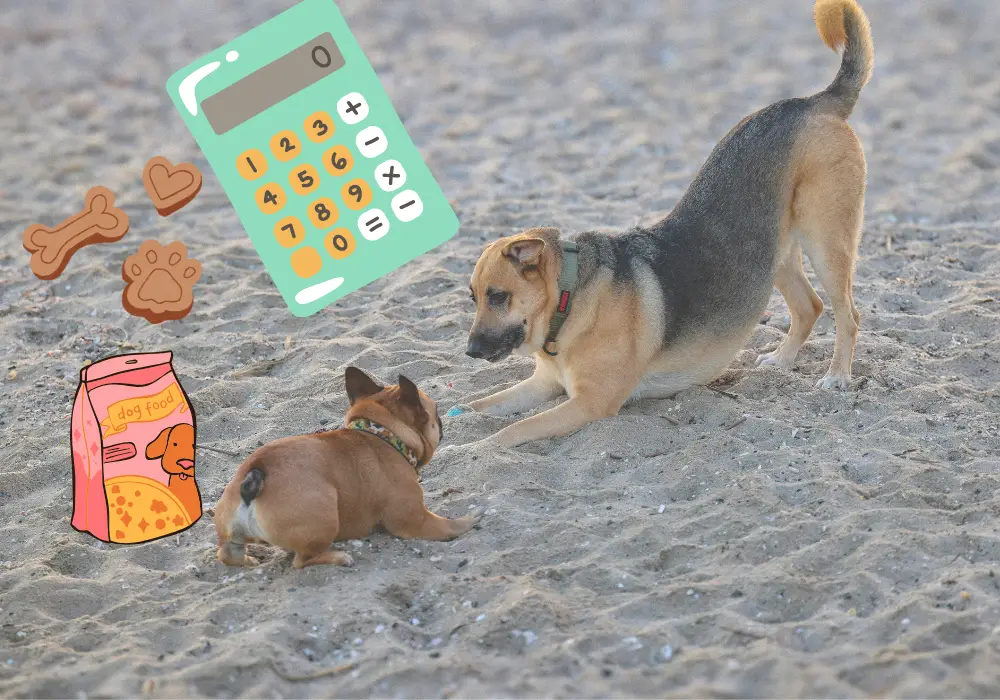
- Puppies: Growing dogs need frequent feedings with higher protein and calorie content. You can use a calculator designed for puppies to avoid overloading their developing digestive systems.
- Senior Dogs: Older dogs require fewer calories but joint-supporting nutrients like glucosamine. A calculator ensures their diet and balance without unnecessary calories.
How Mixing Wet and Dry Food Affects Your Dog’s Health
When done correctly, mixing wet and dry dog food can positively impact your pet’s overall health. However, there are benefits and considerations to keep in mind:
Key Benefits
- Improved Hydration: Wet food increases your dog’s water intake, which is helpful for dogs prone to urinary tract issues.
- Dental Health Support: The crunchiness of dry kibble aids in reducing plaque buildup and maintaining oral hygiene.
- Weight Management: Calculators will help you get the right calories and maintain a healthy weight.
Potential Concerns
- Digestive Upset: Rapidly introducing wet food may cause diarrhea or vomiting in sensitive dogs. Transition gradually to avoid issues.
- Allergies: Some dogs may be allergic to damp or dry food ingredients. Monitor for symptoms like itching, swelling, or gastrointestinal upset.
Why Use Mixing Wet and Dry Dog Food Calculator Free?
When you mix wet and dry food, it is essential to get the amounts right. Wet food has less water and fewer calories, while dry food has more calories. Using the correct portions helps balance nutrients, keeping them healthy and happy at every meal.
- Dry Food (Kibble): High in calories and provides a crunchy texture that promotes dental health.
- Wet Food (Canned): Rich in protein and moisture, making it an excellent choice for hydration and taste.
A mixing calculator gives the correct balance; It protects overfeeding and underfeeding. For example, if your dog requires 800 calories daily, the calculator might recommend:
- 400 calories from wet food.
- 400 calories from dry kibble.
You can also maximize the benefits of both food types.
Perfect Meal Schedule: How and When to Feed Your Dog
Dogs love routines, regular mealtimes, and better bodywork. It gives them the right energy for a healthy tummy. A set schedule also helps them behave well because they know when to expect food.
How Should You Feed Your Dog?
Most dogs do best with two meals daily: one in the morning and one in the evening. Smaller meals three to four times a day are ideal for puppies, as their growing bodies need a constant energy supply. Active dogs or large breeds may also benefit from splitting their meals into three portions. This prevents bloating or digestive issues.
What Are the Best Feeding Times?
The general rule is 8 to 12 hours apart. Feed your dog breakfast between 7:00 and 9:00 AM and dinner around 6:00 and 8:00 PM. This digestion cycle helps to avoid hunger-related irritability.
The Importance of Routine
Dogs do well with regular meal times every day. A good schedule helps them maintain a healthy weight and prevents them from begging for food and overeating. You can use an automatic feeder to stick to your routine if you are busy. Feeding at the same time keeps them active, healthy, and happy.
How much does a cup of dry dog food weigh?
The weight of dog food is critical for precise feeding:
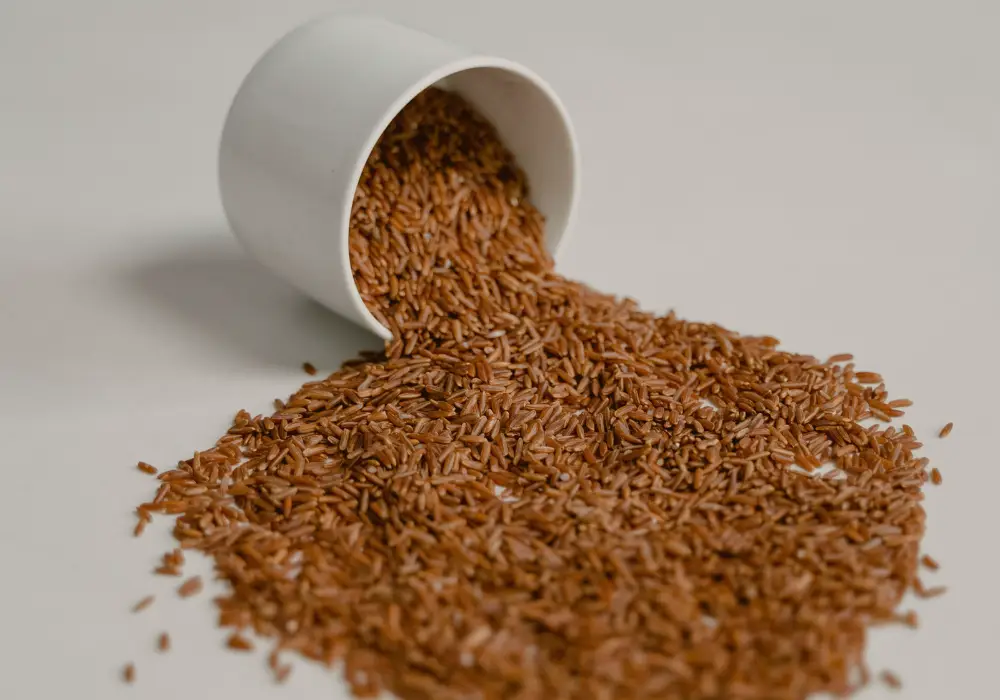
The weight of a cup depends on the food type:
- Dry kibble: ~100 grams or 3.5 ounces
- Wet food: ~225 grams or 8 ounces
How Much Does Half a Cup of Dog Food Weigh?
- Dry kibble: ~50 grams or 1.75 ounces
- Wet food: ~112.5 grams or 4 ounces
These measurements can differ between brands, so always check the packaging for specific information.
Breed-Specific Dog Food Calculators
Using a breed-specific calculator can help your dog’s diet based on size, activity level, and unique needs:
Raw Dog Food Calculator by Breed
If you feed raw food, calculators help you know the right amounts to give. They use your dog’s breed, size, and activity to find the perfect mix of meat, veggies, and extras. This helps to feed your dog healthy meals without guessing.
Dog Food Calculator for Weight Gain by Breed
If your dog is underweight, the Purina Beyond Dog Food Calculator by Breed can help you increase its calorie intake safely without overfeeding.
Purina Dog Food Calculators
Purina dog food calculator by breed offers specialized tools, including:
- Purina Beyond Dog Food Calculator
- Purina Senior Dog Food Calculator by Breed
These tools ensure your dog’s needs, whether active puppies or aging companions are met.
Raw Dog Food vs. Mixed Wet and Dry Food
Many pet owners wonder if raw food is better than mixing wet and dry food. Raw food has natural nutrients, but mixing wet and dry food is easier and safer. Raw food can spoil quickly and may have germs. Both choices need the right portions and calories to keep your dog healthy.
How to Mix Wet and Dry Dog Food
Follow these tips for a smooth transition:
- Start Gradually: Introduce wet food in small amounts to avoid upsetting your dog’s stomach.
- Maintain Ratios: Use a calculator to determine the appropriate split.
- Monitor Hydration: Wet food adds moisture, but ensure your dog drinks enough water.
- Pick High-Quality Foods: Both wet and dry options should meet AAFCO nutritional standards.
Common Ratios for Wet and Dry Dog Food
- 50/50 Ratio: Equal amounts of wet and dry food, ideal for balanced nutrition.
- 25/75 Ratio: More dry food for cost-efficiency, with wet food as a topper.
Common Dog Feeding Mistakes to Avoid for Better Health
It is easy to Feed your dog, but some mistakes can harm its health. You can fix these problems, which helps to maintain a healthy weight and energy. Giving too much food is a common mistake. Many dogs don’t move a lot and eat more calories than they need, which can cause weight gain and problems like obesity. Use your dog’s size, activity level, and age to decide how much to feed.
Another area for improvement is keeping food portions the same as your dog gets older or less active. Older dogs or those who slow down need fewer calories, and with changes, they may gain more weight. Feeding at random times is another problem. Dogs do better when meals happen at the same time every day.
- Also Read: Can dogs eat rabbit food?
FAQs
1. How Much Does a Cup of Wet or Dry Dog Food Weigh?
As mentioned earlier:
- 1 cup of dry kibble: ~100 grams (3.5 ounces)
- 1 cup of wet food: ~225 grams (8 ounces)
2. Can I Mix Wet and Dry Food Every Day?
Yes! Daily mixing is excellent as long as the ratios with caloric needs.
3. Is Wet Food Better Than Dry Food?
There is no one-size-fits-all choice when it comes to dog food. Wet food adds moisture to your dog’s diet and is gentle on older dogs’ teeth, while dry food helps to clean teeth while chewing.
What works best depends on your dog’s age, health, and daily needs.
4. What Ratio Should I Start With Mixing Wet and Dry Dog Food Calculator?
Begin with a 25/75 ratio (wet/dry). This makes it easy to transition and monitor your dog. Gradually increase the wet food portion if desired.
5. How Do I Transition Between Food Types?
Introduce wet food gradually over 7-10 days. You can start with a small amount of wet food mixed into their usual kibble and increase the proportion daily.
Final Thoughts
Mixing wet and dry dog food calculator can be a game-changer for your dog’s nutrition and enjoyment of mealtime. Using a mixing damp and dry dog food calculator, you can ensure every meal meets their unique needs within your budget. For more tips, explore Mixing the correct ratios: The wet and dry dog food calculator.
About the Author
I’m James Leo, a canine nutrition expert and pet wellness advocate with a passion for helping dog owners make informed, science-backed decisions about their pets’ health. With years of experience in dog food formulation, breed-specific diets, and veterinary care, I specialize in creating research-based guides and tools that improve the lives of dogs and their families.
At DoggyDineZone.com, I’ve played a key role in developing accurate dog dosage calculators, ensuring that pet owners can safely administer medications and supplements tailored to their dog’s unique needs. My work is backed by collaborations with licensed veterinarians and canine nutritionists, blending practical experience with the latest scientific research.
I believe that every dog deserves a healthy, balanced diet, and I’m dedicated to simplifying complex nutrition science into clear, actionable advice. Whether you’re looking for homemade dog food recipes, breed-specific meal plans, or expert guidance on pet supplements, my goal is to provide reliable and easy-to-follow resources that empower dog owners.
I stay updated with the latest veterinary and pet nutrition research by engaging with industry leaders and participating in ongoing education. My approach is simple: help pet owners make confident, well-informed choices for their furry companions.
🔹 Medical Disclaimer: The content I provide on DoggyDineZone.com is for informational purposes only and should not replace professional veterinary advice. Always consult a licensed veterinarian regarding your pet’s health and care.
Through my work, I aim to be a trusted voice in canine nutrition and pet care, helping dog owners give their pets the best possible life.

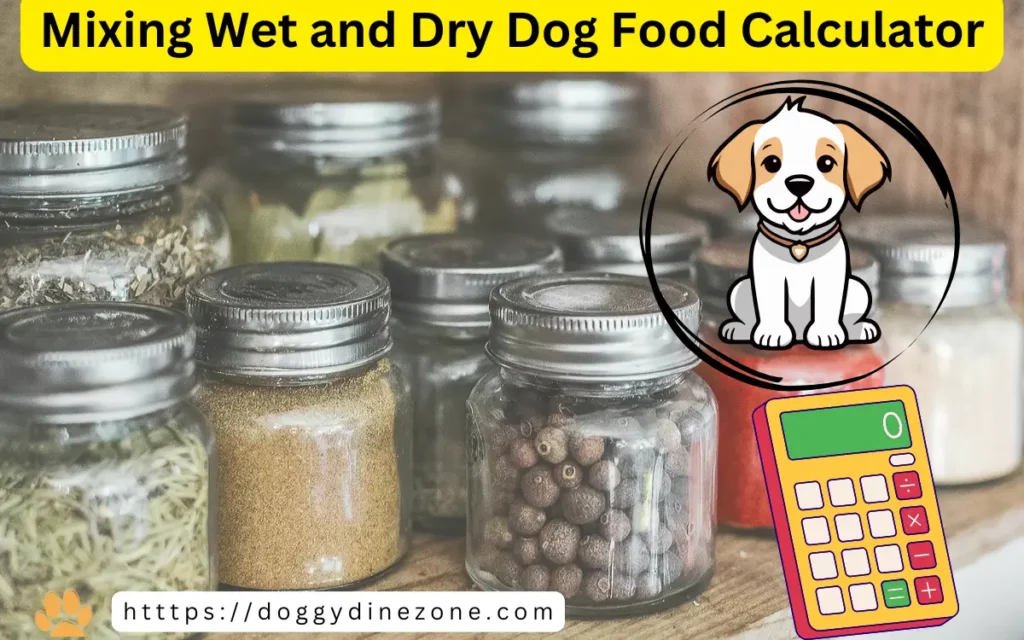

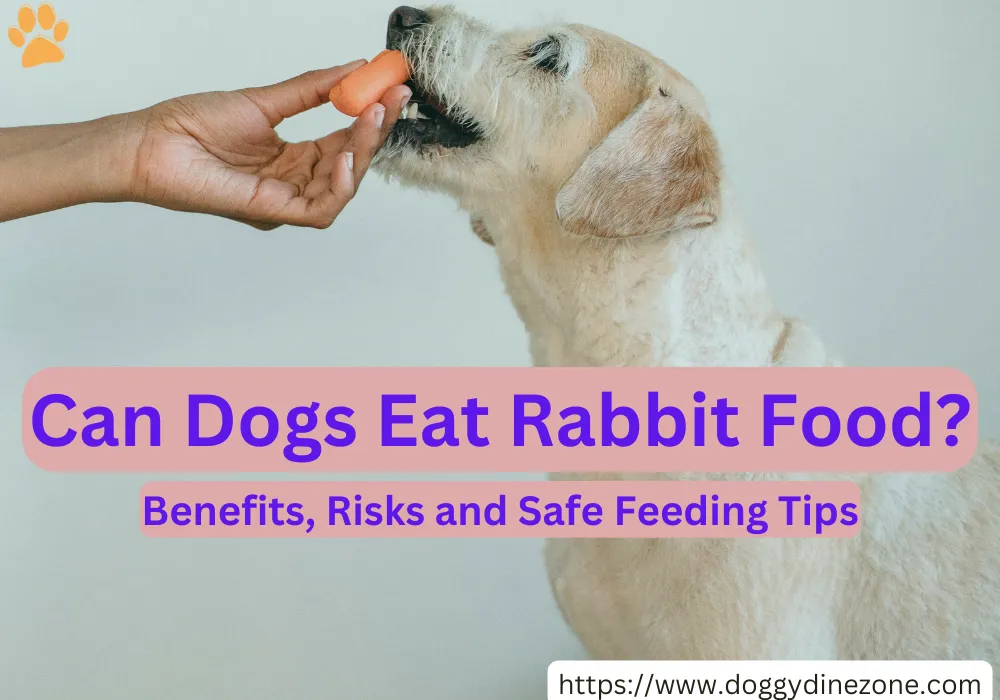
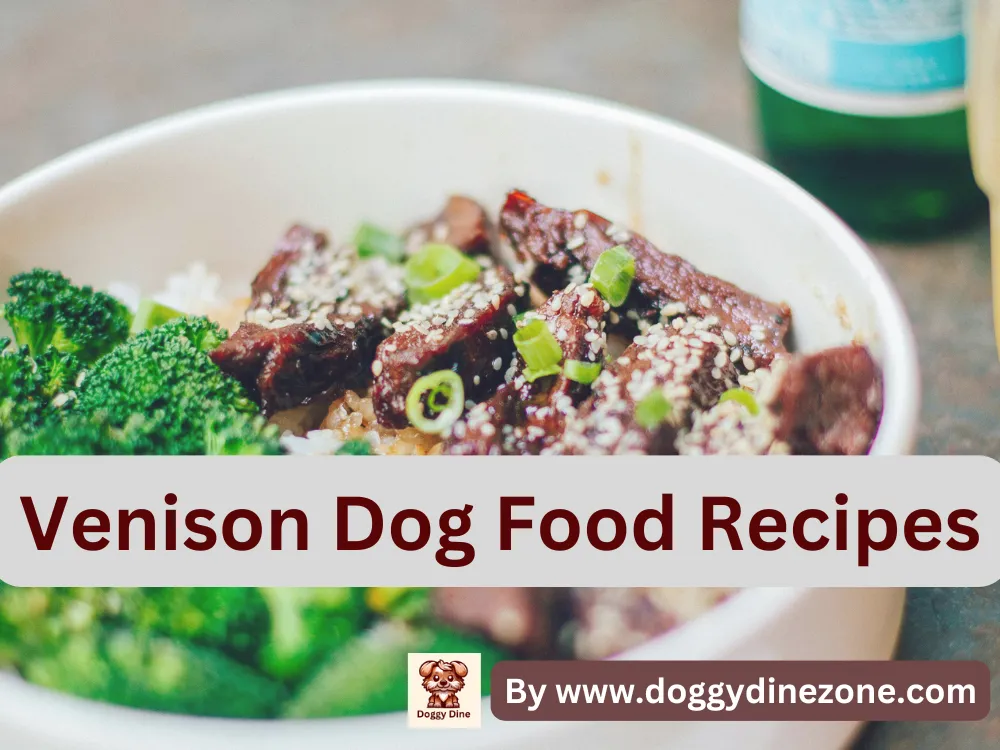
Pingback: Homemade Dog Food Toppers: Quick & Healthy Fix
Pingback: Why Dachshunds Are the Worst Breed? Shocking Truth
Pingback: 100% Free & Easy Doxycycline Dog Dosage Calculator
https://conifer.rhizome.org/roscartr